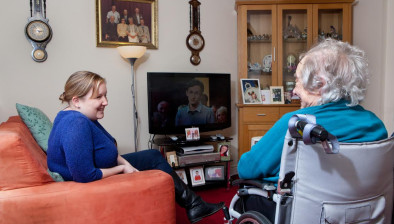Scotland’s care homes sector ‘faces 10% contraction’ as pressures mount

Auchlochan Garden Village
Scotland’s care homes sector is facing an uncertain future due to mounting financial and operational pressures, including shortfalls in local authority funding, with further closures and a contraction in capacity likely, an insolvency expert is warning.
Around 1,050 care homes in Scotland with 40,000 places currently look after an estimated 33,500 residents, however, according to Blair Milne, restructuring & insolvency partner at Azets in Scotland, the number of available places could contract by up to 10% during the next five years.
“Critical issues affecting Scotland’s care homes include staff shortages, high agency fees, inflationary pressures, in particular a sharp rise in food and energy bills, increased compliance costs in the post-pandemic landscape, falling occupancy levels and a shortfall in public funding, with contract rates lagging well behind inflation”, said Blair Milne.
“Significant numbers of entrepreneurs who entered the sector in recent years are considering whether to remain invested whilst prospective new entrants are being deterred by the scale of the problems. The private sector alone cannot maintain the capacity needed to support a growing elderly population.”
He added: “For the last 40 years the care home industry can be summarised by expansion, consolidation, contraction and now closures. A new care home financial model is needed, and the government and the public sector are key to ensuring that the sector has a long-term future.
Blair Milne recently led the administration of the Auchlochan retirement village in South Lanarkshire, which remains in administration, and the closure of the landmark Balmanno Care Home in the West End of Glasgow. Both businesses were severely affected by staff shortages, soaring operational costs, empty rooms and cash flow problems. They were also severely impacted by static local authority payments with better-off residents effectively subsidising the fees for many residents.
Around 200 care homes have closed in Scotland since 2012 and the number of available spaces has contracted by an estimated 2,000. At a UK level, nearly 1,600 care homes across the UK closed between 2015 and 2020, of which many recorded ‘good’ ratings from the Care Quality Commission.
“One of the most significant challenges facing operators is staff recruitment and retention with staff turnover averaging 28.5% in a sector which reportedly employs 752,000 people across the UK”, said Blair Milne.
“We estimate that up to as many as 10,000 staff are leaving their jobs every year in the care home sector in Scotland. The shortfall in staff threatens the ability of care homes to meet the required service standards and as the population ages this problem is only going to increase.”
“Add in agency costs, soaring energy, food and medication costs and increasingly onerous health and safety obligations, it is little wonder that many care homes are facing unsustainable financial problems.
“It is a sobering thought that the UK is expected to have 8.3 million people aged 75 or older in less than four Parliament terms away, and Scotland, with its older population, is set to see a higher relative increase. Arguably a new care home funding model is required to ensure the sector is sustainable or further closures and a decline in capacity is likely”.
Blair Milne urged care home owners and investors worried about their financial and trading position to seek advice as soon as possible.
He said: “The situation for the care home sector in Scotland is extremely difficult and problems can quickly become overwhelming. We recommend that owners and funders seek early advice, ensuring adequate time to develop a strategy that can secure the long-term future of the business.”








